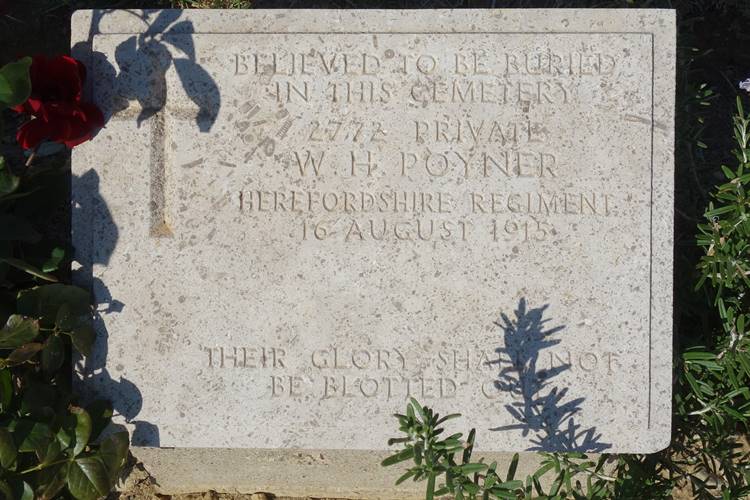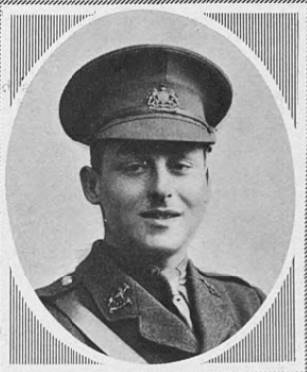This article looks at Herefordshire Regiment during the First World War and will help you research the soldiers who served with the Regiment. This page is one of my guides to help you research soldiers who served in the British Army:
The Herefordshire Regiment in the First World War
The Herefordshire Regiment was a Territorial Force regiment and one of the smallest in the British Army. Prior to the outbreak of war, the Regiment consisted of a single battalion which had its headquarters at The Barracks, Hereford. It was part of the Welsh Border Infantry Brigade of the Welsh Division and recruited its eight companies from the following areas:
- A Company: Burghill, Hereford, Peterchurch, Madley and Marden
- B Company: Ross-on-Wye and Upton Bishop
- C Company: Bosbury, Colwall, Ledbury and Much Marcle
- D Company: Eardisley, Kington and Presteigne
- E Company: Littledean and Ruardean
- F Company: Bromyard and Leominster
- G Company: Bucknell, Chapel Lawn, Llandrindod Wells, Knighton, Newbridge, and Rhayader
- H Company: Hereford
The Regiment raised two new battalions during the war, second and third-line battalions but only the original battalion served abroad. The 1/1st Battalion, as it became known once the second-line was formed, served in Gallipoli, Egypt, and Palestine and on the Western Front. Between 19 September 1914 and 11 November 1918, the Commonwealth War Graves Commission recorded 501 dead for the Herefordshire Regiment.
1/1st Battalion The Herefordshire Regiment
After the declaration of war on 4 August 1914, the Herefordshire Regiment was embodied and moved to Pembroke Dock. Shortly after, the Regiment was moved to Oswestry and by the end of the month was at Irchester and Rushden. In September, a second-line was formed with the original unit becoming the 1/1st Battalion The Herefordshire Regiment. Though, it was still often referred to as the 1st Battalion. In December, the Battalion moved to Bury St Edmonds where it was still stationed when it was transferred to the North Wales Brigade in the Welsh Division in April 1915. The next month, the Battalion moved to Bedford and it was here that the North Wales Brigade was redesignated as the 158th Brigade and the Welsh Division as the 53rd (Welsh) Division on 13 May.
On 16 July, the Battalion embarked at Devonport on the Euripides for Gallipoli, Turkey. Travelling via Malta, Egypt, and Lemnos, the Battalion landed at Suvla Bay on 9 August and served in the campaign until evacuated on 12 December to Egypt. On 22 December, the Battalion landed at Alexandria and moved to Warden, to the north of Cairo the same day. The Battalion then served in Egypt and Palestine until it was withdrawn to Italy on 22 June 1918, having left the 53rd Division on 1st. After travelling across Italy, the Battalion arrived in France where it joined the 102nd Brigade of the 34th Division on 30 June 1918. The 1/1st Battalion then served on the Western Front for the remainder of the war. Below is a special memorial to William Henry Poyner who was killed in action at Suvla, Gallipoli on 16 August 1915. William is believed to be buried in the Azmak Cemetery.
2/1st Battalion The Herefordshire Regiment
The 2/1st Battalion The Herefordshire Regiment was formed at Hereford in September 1914 as the Regiment’s second-line. By December, the Battalion had moved to Aberystwyth and in April 1915 was at Northampton where it was serving as part of the 205th Infantry Brigade 68th Division. Between May and June 1915, the Battalion was at Billericay working on defences north of London before moving to Bedford in July and then to Lowestoft in November 1916. In May 1917, the Battalion was at Herringfleet and on 10 September 1917, was disbanded.
3/1st Battalion The Herefordshire Regiment
This was the Regiment’s third-line unit formed at Hereford in February 1915 to provide drafts to the first and second-line battalions. The 3/1st Battalion moved to Abergavenny later in the year and by September was at Oswestry. On 8 April 1916, the Battalion became the 1st Reserve Battalion and by 1 September 1916 was serving with the Welsh Reserve Brigade. On 24 July 1917, the Battalion was combined with the 4th Reserve Battalion King’s Own Shropshire Light Infantry at Swansea.
Researching a Soldier who Served in the Herefordshire Regiment
If you are researching a soldier who served in the Herefordshire Regiment then you should start with my generic British Army research guides, especially those concerning medal records and abbreviation and acronyms. The latter is an important page as you’ll come across a lot of military jargon in your research. If the soldier you’re researching served abroad with the 1/1st Battalion, then the unit’s war diaries which are discussed below will be your most important source of information on its location and activities. You’ll need to search the records on both Ancestry and Findmypast when researching a soldier.
Officers: A service record is the key document you need to find but not all have survived. If an officer left the British Army prior to April 1922 then a surviving service record will be held at the National Archives. There are over a 100 for the Herefordshire Regiment at the National Archives. If an officer served past April 1922, then in theory, their service record should be held by the Ministry of Defence and you can order a copy. I’d recommend checking the UK, Military Discharge Indexes, 1920-1971 on Ancestry, army lists and the London Gazette if you’re not sure when an officer’s service ended. A good source of information for officers is the 1st Battalion’s war diaries, mentioned below, as they frequently appear. The London Gazette, Army Lists and local newspapers are other important sources of information.
A photograph of Captain Richard Crawford Sale which was published in The Sphere after he was killed in action on 26 March 1917 while serving with the 1st Battalion The Herefordshire Regiment. Captain Sale is commemorated on the Jerusalem Memorial for those who died in Egypt and Palestine and have no known graves. The Sphere published thousands of photographs of officer casualties throughout the war and is available to search on Findmypast. The two most important sources of information to research Sale’s service during the war are his service record held at the National Archives and the 1st Battalion’s war diary.
Other Ranks: A service record is the most important document to find but not all have survived as many were destroyed in the Blitz. If a soldier served past January 1921 then their service record will still be with the Ministry of Defence and you’ll have to apply for a copy. This is a straightforward process but will take some time. Often, you can work out the date a soldier joined the Herefordshire Regiment from their regimental number by finding service records of other soldiers of the Regiment and looking for the date they joined. Providing a soldier served abroad, there will be at least two documents to consult, their medal index card and the corresponding medal roll/s. Other important sources of information include Soldiers Died in the Great War, casualty lists, local newspapers and silver war badge records.
War Diaries of the Herefordshire Regiment
A war diary was written by an officer and recorded a unit’s location and activities. They often contain appendices in the form of battle reports, maps, orders etc. There are only four war diaries for the Herefordshire Regiment. One is available on Ancestry, another can be downloaded from the National Archives’ website for a small fee and the other two are only available to view at the National Archives. The blue links below will take you to their catalogue entries.
1/1st Battalion The Herefordshire Regiment War Diaries
- Date: 01 July – 31 December 1915
- 158th Brigade, 53rd (Welsh) Division, Gallipoli
- Reference: WO 95/4323
- Notes: A good war diary which contains a lot of detail. Appendices include a list of officers who became casualties during August and early September, a sketch of the Suvla area from August and recommendations for gallantry awards. There are also some very rare recommendations for mentioned in despatches. This war diary is available to view and download on Ancestry.
- Date: January 1916 – May 1918
- 128th Brigade, 53rd (Welsh) Division
- Reference: WO 95/4626
- Notes: This war diary hasn’t been digitized and can only be viewed at the National Archives.
- Date: 01 June 1918 – 30 April 1919
- 102nd Brigade, 34th Division
- Reference: WO 95/2462/3
- Notes: This is mostly a poor war diary with very little detail in the daily entries. There are appendices recording the officers who joined and left the Battalion each month, along with the number of other rank reinforcements and casualties.
2/1st Battalion The Herefordshire Regiment
- Date: 01 September 1915 – 31 March 1916
- 205th Brigade, 68th Division
- Reference: WO 95/5464
- Notes: There are slightly longer entries for September than is usual for a home service unit but from October onwards there’s not a lot of detail. Only one entry is recorded for October “This Battalion during the month of October was stationed at Bedford” and those for February and March consist of “Nil”. There is a two-page summary giving an overview of the Battalion covering its stations, concentration, training, discipline, administration etc.
Regimental History of the Herefordshire Regiment
No history was written for the regiment until 1962 when the Historical Record of the Herefordshire Light Infantry and its Predecessors edited by Geoffrey Archer Parfitt was published. This book had a limited print run and I haven’t seen a copy. There is a copy at the British Library.


